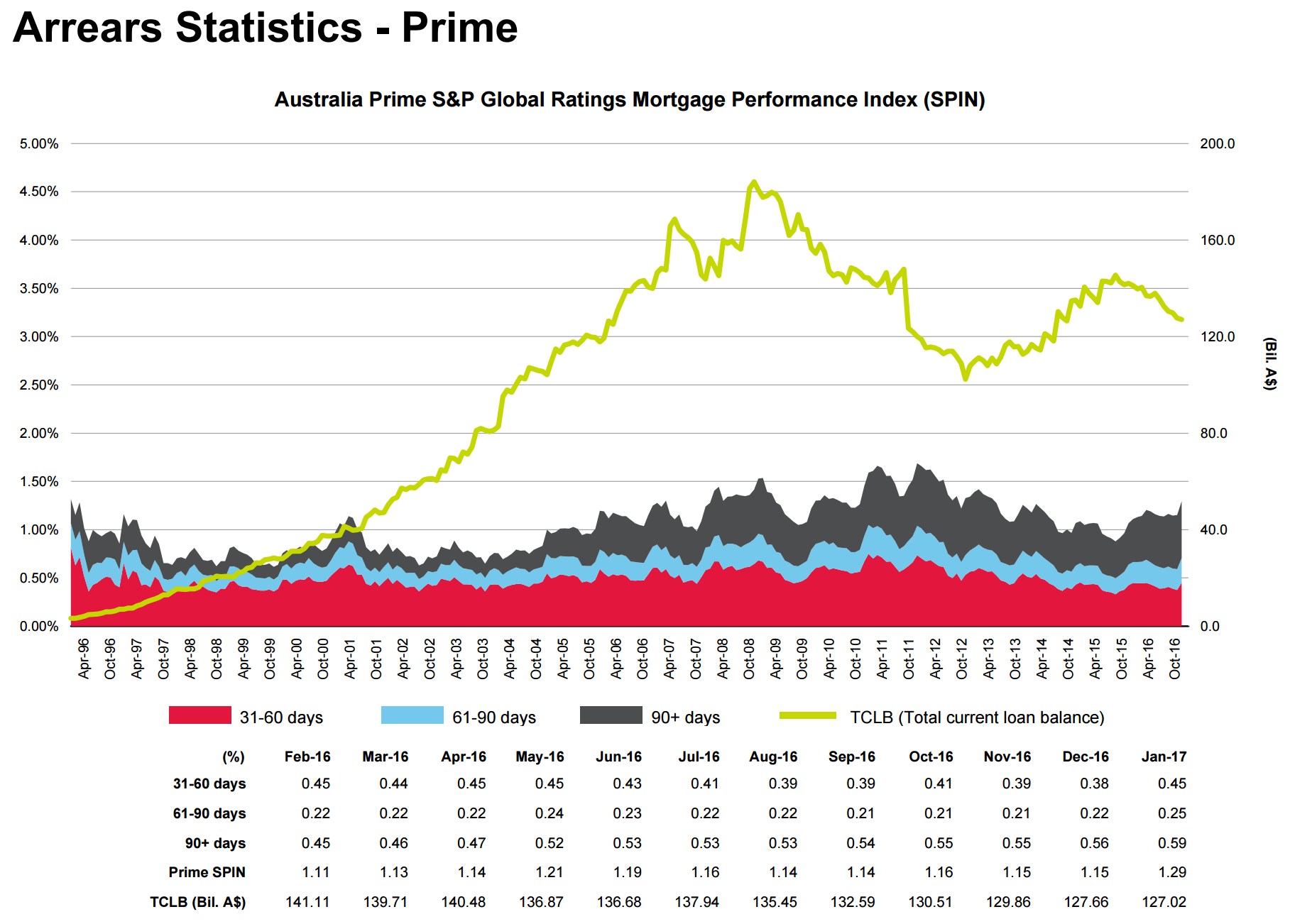From S&P:
The number of delinquent housing loans underlying Australian prime residential mortgage-backed securities (RMBS) increased in January to 1.29% from 1.15% in December, according to a recent report by S&P Global Ratings. Arrears typically increase between November and April, affected by spending on Christmas and summer holidays. However, the magnitude of the month-on-month increase in January 2017 was higher than in previous months.
While some of the increase is due to a decline in outstanding loan balances, the category for mortgages 31-60 days in arrears showed the largest increase, which suggests more borrowers have fallen behind on their loan repayments for the first time. The trend was broadly consistent among all loan originators. The major bank and regional bank sectors recorded larger increases in borrowers who are 31-60 days behind on their mortgage repayments. All originators except nonbank financial institutions recorded an increase in arrears in January compared with the previous month. Despite the increase, arrears levels in January remained close to long-term averages.
The weighted-average variable interest rate increased more month on month in January for post-2013 transactions than earlier vintages. This is likely to have had a more pronounced effect on the Standard & Poor’s Performance Index (SPIN) because more-recent vintages make up a larger proportion of total RMBS outstandings. The weighted-average SPIN measures all Australian RMBS transactions we rate that are more than 30 days in arrears.
When first applied, mortgage rate increases can create an initial spike in arrears that could subside in the following months, particularly if the increase is introduced when more borrowers are likely to be on holidays. The degree to which the timing of the rate increases influenced the SPIN in January will become more evident in the coming months.
Mortgage arrears rose in every state and territory in January from the previous month. Among the states, South Australia recorded the largest increase in arrears, rising to 1.81% from 1.53% in December, Home loan arrears in Western Australia rose to 2.33% in January from 2.10% in December. Arrears rose month on month in January to 1.03% in New South Wales and 1.18% in Victoria.
The high level of household debt in Australia means borrowers are more sensitive to interest-rate movements. Lenders have announced rate increases out of cycle with cash rate increases, and we expect arrears to rise further.
Although mortgage arrears have increased, even at these levels we do not believe it is likely to affect our ratings on most Australian RMBS, particularly the senior tranches, which continue to benefit from strong levels of credit enhancement. Relatively stable employment conditions are a key support of the current low levels of defaults and losses in RMBS transactions.
To the charts. Headline numbers:

By states:

It’s a normal seasonal pattern but majors and regionals at the highest rate in fifteen years:

And vintages:

Still looks largely mining bust driven.

